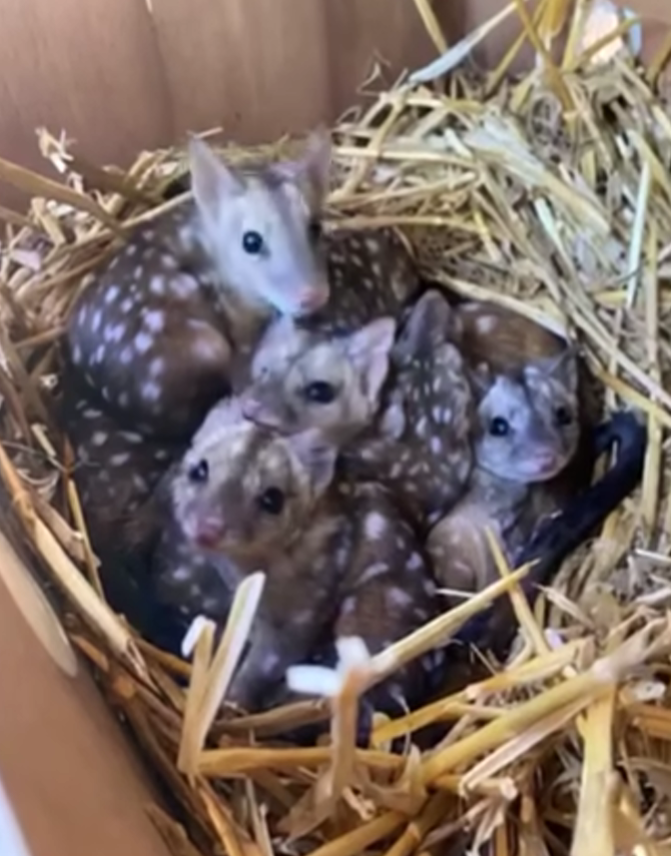Once widespread across Australia, the western quoll (Dasyurus geoffroii) nearly vanished due to habitat loss, invasive predators, and human development. But at Mt Gibson Wildlife Sanctuary in Western Australia, conservationists have confirmed a major milestone: the birth of pouch young in the wild—a key sign the species is establishing itself again.
By the 1960s, quoll numbers had dropped below 2,000 and were confined to a few small areas. In response, the Australian Wildlife Conservancy (AWC) launched a reintroduction project at Mt Gibson, equipped with predator-proof fencing, restored habitat, and intensive monitoring. Between 2021 and 2023, 40 quolls were released following health checks and GPS collaring. In May 2025, researchers spotted a female, nicknamed Aang, with tiny pouch young—marking the first recorded wild births at the site.
Ecological Benefits
Western quolls are vital predators. They help control beetle, rodent, and reptile populations, indirectly supporting vegetation health and biodiversity. Since their reintroduction, rodent activity has already dropped by 40%.
Keys to Success
- Predator control through fencing and monitoring
- Habitat restoration to provide food and shelter
- Community involvement, including Indigenous ranger groups
- Adaptive management, using real-time data to guide decisions
What’s Next
AWC aims to expand reintroductions, study genetic diversity, and launch educational outreach. The success at Mt Gibson shows that with science, care, and collaboration, even species on the brink can rebound.
As ecologist Georgina Anderson says, “Nature responds when given a chance.” And in the soft dusk of Mt Gibson, three tiny quolls now cling to life—and to hope.


